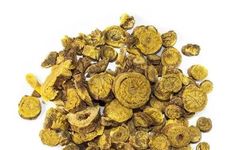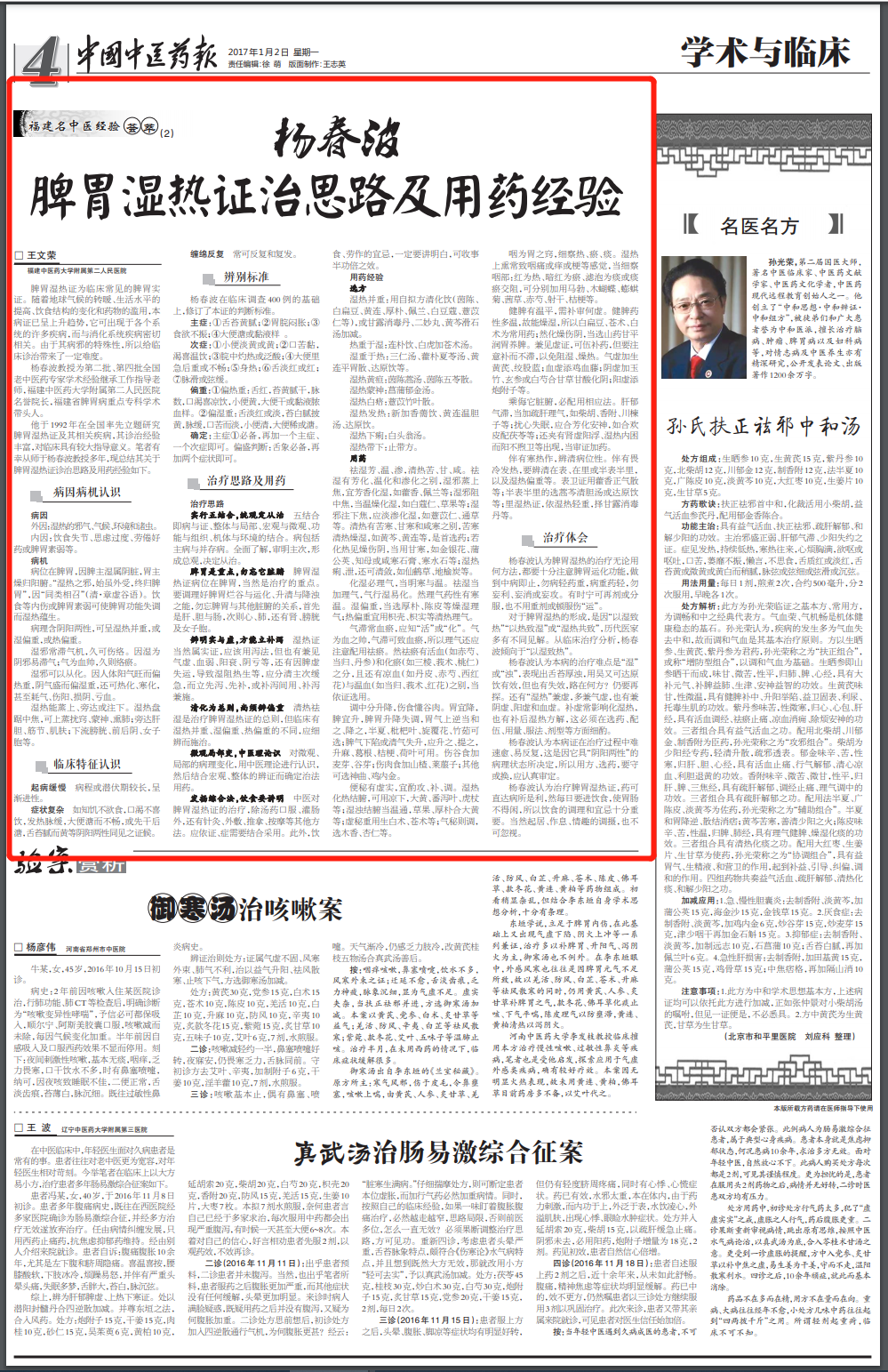
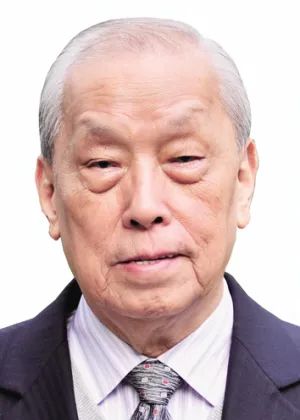
▲ Master Yang Chunbo
The Spleen-Stomach Damp-Heat Syndrome is a common clinical syndrome of the Spleen and Stomach. With the warming of the Earth’s climate, improvements in living standards, changes in dietary structure, and the abuse of medications, this syndrome has shown an upward trend. It can occur in many diseases across various systems and is closely related to digestive system diseases. Due to the particularity of its pathogenic factors, it poses certain difficulties for clinical diagnosis and treatment.Professor Yang Chunbo is a guiding teacher for the second and fourth batches of national experts in traditional Chinese medicine (TCM) academic experience inheritance, the honorary president of the Second People’s Hospital of Fujian University of Traditional Chinese Medicine, and a leading academic figure in the field of Spleen and Stomach diseases in Fujian Province.In 1992, he was the first in the country to study the Spleen-Stomach Damp-Heat Syndrome and its related diseases, accumulating rich clinical experience that holds significant guiding value. Below is a summary of his treatment strategies and medication experience for the Spleen-Stomach Damp-Heat Syndrome.Understanding of Etiology and PathogenesisEtiologyExternal Factors: Damp-heat pathogenic factors, climate, environment, and various insects.Internal Factors: Irregular diet, excessive thinking, overwork, or inherent weakness of the Spleen and Stomach.PathogenesisThe disease is located in the Spleen and Stomach, as the Spleen governs dampness (yin organ), while the Stomach governs dryness (yang organ). “The damp-heat evil, although initially received externally, ultimately returns to the Spleen and Stomach,” due to the principle of “similarities attract” (Qing Dynasty, Zhang Xugu). Internal injuries from diet or inherent weakness of the Spleen and Stomach can lead to dysfunction, resulting in the accumulation of damp-heat.The pathology contains both yin and yang characteristics, which can present as equal damp-heat, or with a predominance of dampness or heat.Dampness often stagnates the qi mechanism, which can lead to collateral damage over time. Since dampness is a yin evil, it easily stagnates qi; qi is the commander of blood, and prolonged stagnation can lead to blood stasis.Dampness can transform. Due to the body’s abundant yang qi, it can become overly hot, while excessive yin can lead to increased dampness, and it can also transform into heat or cold, even consuming qi, damaging yang, harming yin, and depleting blood.Damp-heat can ascend, spread laterally, or descend. When damp-heat occupies the middle jiao, it can ascend to disturb the orifices, cloud the spirit, and affect the lungs; spread laterally to the liver, gallbladder, tendons, and skin; or descend to the bladder, genitalia, and uterus.
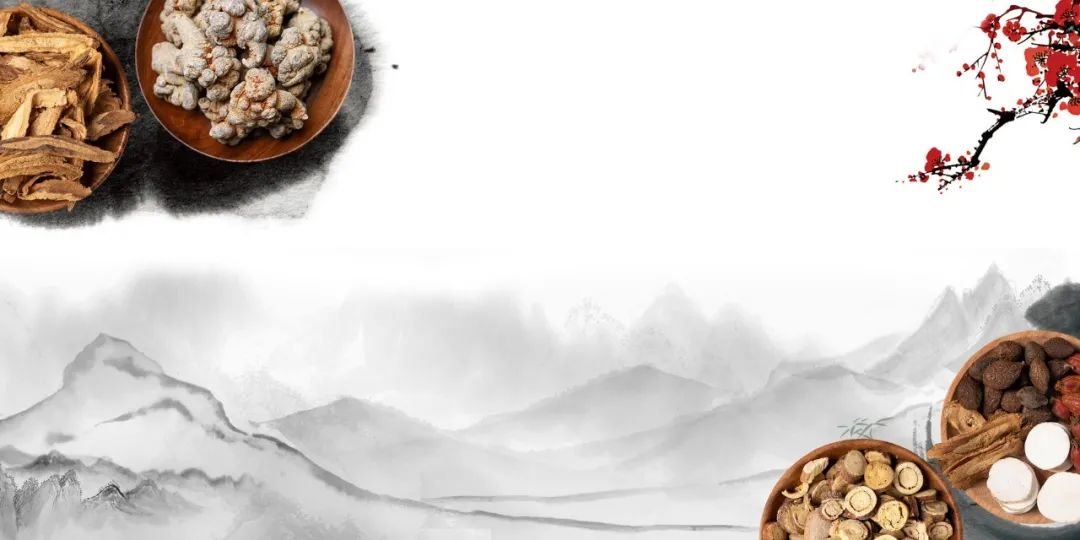
Clinical CharacteristicsSlow Onset
The course of the disease or latent period is relatively long and progressive.
Complex Symptoms
Symptoms may include lack of appetite despite hunger, thirst without desire to drink, fever with a slow pulse, loose stools that are not smooth, or initially dry then loose, with a greasy yellow tongue coating, reflecting the coexistence of yin and yang symptoms.
Chronic and recurrent, often can recur and relapse.Diagnostic CriteriaBased on a clinical survey of 400 cases, Yang Chunbo revised the diagnostic criteria for this syndrome.Main Symptoms:① Yellow greasy tongue coating; ② Distension and fullness in the epigastrium; ③ Poor appetite; ④ Loose stools or mucus-like stools.Secondary Symptoms:① Light yellow or yellow urine; ② Bitter and sticky mouth, thirst with a preference for warm drinks; ③ Burning sensation in the epigastrium or acid reflux; ④ Urgency and heaviness after defecation or difficulty; ⑤ Fever; ⑥ Pale red or red tongue; ⑦ Slippery or wiry slow pulse.Predominance:① Predominantly heat: red tongue, yellow greasy dry coating, rapid pulse, thirst with a preference for cool drinks, yellow urine, dry or mucus-bloody stools. ② Predominantly damp: pale red or pale tongue, white greasy coating with yellow, slow pulse, bitter and bland mouth, clear urine, loose or watery stools.Confirmation:Main symptom ① is essential, plus one main symptom and one secondary symptom. For predominant judgment: the tongue condition is essential, plus two symptoms.
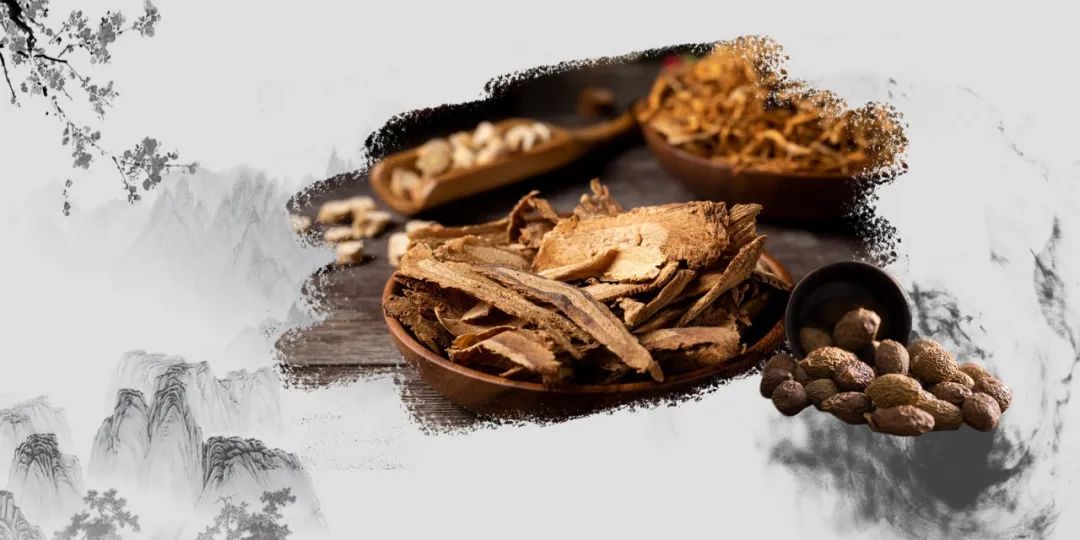
Treatment Strategies and MedicationTreatment StrategiesImplement Five Integrations, Comprehensive Treatment The five integrations refer to the combination of disease and syndrome, overall and local, macro and micro, function and organization, and the body and environment. The disease includes the main disease and comorbidities. A comprehensive understanding, clarifying priorities, forming a holistic view, and determining treatment direction are essential.The Spleen and Stomach are the Focus, Do Not Forget Other Organs The Spleen-Stomach Damp-Heat Syndrome is located in the Spleen and Stomach, which is naturally the focus of treatment. It is essential to regulate the Spleen and Stomach’s ability to transform and transport, as well as to ascend clear and descend turbid, while not forgetting the relationship between the Spleen and Stomach and other organs, primarily the liver, gallbladder, and intestines, followed by the heart, lungs, and also the kidneys, bladder, and uterus.Distinguish Between Excess and Deficiency to Determine Treatment The damp-heat syndrome is certainly an excess syndrome, which should be treated with purging methods, but there may also be concurrent qi deficiency, blood weakness, yang decline, yin deficiency, etc. Additionally, due to Spleen deficiency leading to dysfunction, causing dampness to obstruct heat, it is necessary to distinguish priorities and urgency, and determine whether to first purge, first tonify, or use a combination of both.Clearing and Transforming as the General Principle, Yet Distinguish Predominance Clearing heat and dispelling dampness is the general principle for treating the Spleen-Stomach Damp-Heat Syndrome, but clinically there are different presentations of equal damp-heat, predominant dampness, or predominant heat, which should be carefully distinguished for treatment.Micro and Local Changes, Understanding TCM Theory For micro and local pathological changes, understanding them through TCM theory, then combining with macro and holistic differentiation to determine treatment methods and medications.Promote Comprehensive Methods, Dietary Guidance is Essential In TCM treatment of Spleen-Stomach Damp-Heat Syndrome, in addition to oral decoctions and enemas, there are also acupuncture, external applications, tuina, and massage among other methods. These should be combined according to the syndrome and symptoms. Furthermore, dietary and labor restrictions must be clearly stated to achieve significant results.Medication ExperiencePrescription SelectionEqual Damp-Heat: Use a self-formulated Qinghua Decoction (Yin Chen (Artemisia capillaris), Bai Bian Dou (White Hyacinth Bean), Huang Lian (Coptis chinensis), Hou Po (Magnolia Officinalis), Pei Lan (Eupatorium), Bai Dou Kou (White Cardamom), Yi Yi Ren (Job’s Tears), etc.), or Gan Lu Xiao Du Dan, Er Miao Wan, Huang Qin Shi Wei Decoction with modifications.Predominantly Heat: Lian Po Decoction, Bai Hu Jia Cang Zhu Decoction.Predominantly Damp: San Ren Decoction, Huo Po Xia Ling Decoction, Huang Lian Ping Wei San, Da Yuan Decoction, etc.Damp-Heat Jaundice: Yin Chen Hao Decoction, Yin Chen Wu Ling San.Damp-Heat Disturbing the Spirit: Chang Pu Yu Jin Decoction.Damp-Heat Skin Issues: Yi Yi Zhu Ye San.Damp-Heat Fever: Xin Jia Xiang Ru Decoction, Huang Lian Wen Dan Decoction, Da Yuan Decoction.Damp-Heat Diarrhea: Bai Tou Weng Decoction.Damp-Heat Vaginal Discharge: Zhi Dai Fang.MedicationTo dispel dampness, use aromatic, warming, and draining methods; to clear heat, use bitter, sweet, and salty methods. Dispersing dampness can be aromatic, warming, or draining. When dampness evil ascends to the upper jiao, aromatic methods are preferred, such as Huo Xiang (Agastache) and Pei Lan; when dampness evil obstructs the middle jiao, warming and drying methods should be used, such as Bai Dou Ren (White Cardamom) and Cao Guo (Tsaoko); when dampness evil descends to the lower jiao, light draining methods should be used, such as Yi Yi Ren and Tong Cao (Tetrapanax). Clearing heat can be bitter-cold, sweet-cold, or salty-cold. Bitter-cold clears heat and dries dampness, such as Huang Qin (Scutellaria baicalensis) and Huang Lian, which are the first choice; if heat transforms into dryness and injures yin, sweet-cold herbs like Jin Yin Hua (Honeysuckle), Pu Gong Ying (Dandelion), Zhi Mu (Anemarrhena) or salty-cold herbs like Shi Gao (Gypsum) and Han Shui Shi (Cold Water Stone) should be used; for damp-heat diarrhea, astringent herbs like Xian He Cao (Agrimonia) and Di Yu (Sanguisorba) can also be used.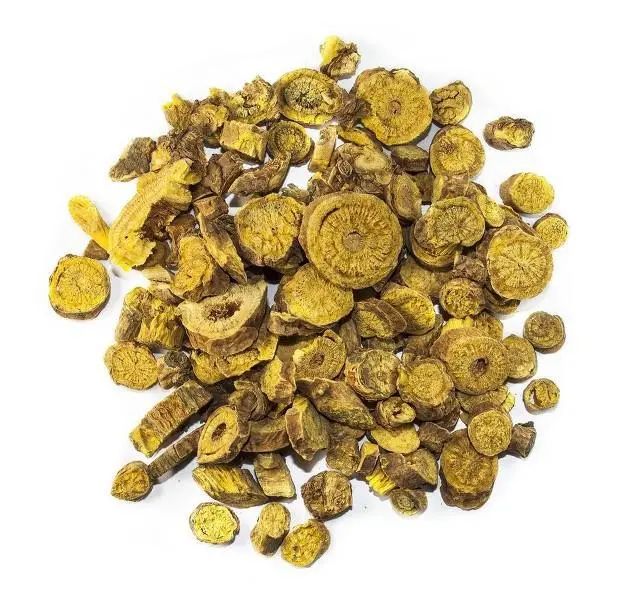 ▲ Huang Qin (Scutellaria baicalensis)To dispel dampness, it is essential to regulate qi, distinguishing between cold and warm. To dispel dampness, qi regulation should be added, as qi movement facilitates dampness transformation. However, qi-regulating herbs have cold and warm properties. For predominant dampness, select Hou Po (Magnolia Officinalis) and Chen Pi (Aged Tangerine Peel) for drying dampness and regulating qi; for predominant heat, use Zhi Qiao (Bitter Orange) and Zhi Shi (Unripe Bitter Orange) for clearing heat and regulating qi.Qi stagnation often leads to blood stasis, and it is important to know whether to “activate” or “transform.” Qi is the commander of blood, and qi stagnation can lead to blood stasis, so qi regulation should also consider the use of blood-activating herbs. However, blood-activating herbs can be divided into those that invigorate blood (such as Chi Shao (Red Peony), Dang Gui (Angelica), Dan Shen (Salvia miltiorrhiza)) and those that transform stasis (such as San Leng (Sparganium) and E Zhu (Curcuma)), and there are also cooling blood (such as Dan Pi (Moutan) and Chi Shao) and warming blood (such as Dang Gui and E Zhu) distinctions, which should be selected according to the syndrome.Regulate the middle and differentiate ascending and descending, understanding food injury. The Stomach should descend, while the Spleen should ascend. When the Spleen and Stomach’s ascending and descending functions are disordered, if Stomach qi ascends, it should be harmonized and descended using Ban Xia (Pinellia), Pi Pa Ye (Loquat Leaf), Xuan Fu Hua (Inula), and Zhu Ru (Bamboo Shavings); if Spleen qi descends or clear qi fails to ascend, it should be raised and lifted using Sheng Ma (Cimicifuga) and Ge Gen (Pueraria); for food injury, use Mai Ya (Barley Sprout) for grain injury; Shan Zha (Hawthorn) for meat injury; and others can include Shen Qu (Malt) and Ji Nei Jin (Chicken Gizzard Lining).Constipation can be due to deficiency or excess, and should be treated accordingly with attack, tonify, or regulate. For damp-heat transforming into heat and binding the bowels, cooling methods such as Da Huang (Rhubarb), Fan Xie Ye (Senna), and Hu Zhang (Polygonum) can be used; for damp turbidity binding the bowels, warming and unblocking methods such as Cao Guo and Hou Po combined with Da Huang can be used; for deficiency constipation, use Sheng Bai Zhu (Fresh Atractylodes) and Cang Zhu (Atractylodes) for tonification; for qi constipation, regulate with Mu Xiang (Costus) and Xing Ren (Apricot Kernel).The throat is the orifice of the Stomach, and careful observation of heat, stasis, and phlegm is necessary. Damp-heat ascending often causes throat pain or itchiness or a sensation of obstruction. Careful examination of the throat: redness indicates heat, dark red indicates stasis, and follicles indicate phlegm or phlegm-stasis obstruction, which can be treated with Ma Bo (Morus), Mu Die (Butterfly Pea), Cheng Qian (Chrysanthemum), Chi Shao, She Gan (Belamcanda), and Jie Geng (Platycodon).Strengthening the Spleen requires warmth and balance, and tonification should be carefully assessed for deficiency. Strengthening Spleen herbs are mostly warming, thus capable of drying dampness, so Bai Bian Dou, Cang Zhu, and Bai Zhu are commonly used; however, if drying transforms into heat and injures yin, Shan Yao (Chinese Yam) should be selected for its sweet, neutral, and moistening properties to nourish the Spleen. If deficiency symptoms are present, tonifying herbs can be added, but care must be taken to tonify without causing stagnation, to avoid obstructing dampness and creating heat. For qi deficiency, add Sheng Huang Qi (Astragalus); for blood deficiency, add Ji Xue Teng (Spatholobus); for yin deficiency, add Yu Zhu (Polygonatum) and Xuan Shen (Scrophularia) or Bai Shao (White Peony) combined with Gan Cao (Licorice) for sweet and sour to nourish yin; for yang deficiency, add Pao Fu Zi (Prepared Aconite).When other organs are affected, corresponding methods must be used. For liver qi stagnation, add herbs to soothe the liver and regulate qi, such as Chai Hu (Bupleurum), Xiang Fu (Cyperus), and Chuan Lian Zi (Melia); for disturbed heart and insomnia, combine aromatic herbs to calm the spirit, such as He Huan Pi (Albizia) with Fu Ling (Poria); if there is also kidney deficiency with floating yang, damp-heat internally obstructing and yang failing to warm the defensive qi, careful assessment and medication addition is necessary.
▲ Huang Qin (Scutellaria baicalensis)To dispel dampness, it is essential to regulate qi, distinguishing between cold and warm. To dispel dampness, qi regulation should be added, as qi movement facilitates dampness transformation. However, qi-regulating herbs have cold and warm properties. For predominant dampness, select Hou Po (Magnolia Officinalis) and Chen Pi (Aged Tangerine Peel) for drying dampness and regulating qi; for predominant heat, use Zhi Qiao (Bitter Orange) and Zhi Shi (Unripe Bitter Orange) for clearing heat and regulating qi.Qi stagnation often leads to blood stasis, and it is important to know whether to “activate” or “transform.” Qi is the commander of blood, and qi stagnation can lead to blood stasis, so qi regulation should also consider the use of blood-activating herbs. However, blood-activating herbs can be divided into those that invigorate blood (such as Chi Shao (Red Peony), Dang Gui (Angelica), Dan Shen (Salvia miltiorrhiza)) and those that transform stasis (such as San Leng (Sparganium) and E Zhu (Curcuma)), and there are also cooling blood (such as Dan Pi (Moutan) and Chi Shao) and warming blood (such as Dang Gui and E Zhu) distinctions, which should be selected according to the syndrome.Regulate the middle and differentiate ascending and descending, understanding food injury. The Stomach should descend, while the Spleen should ascend. When the Spleen and Stomach’s ascending and descending functions are disordered, if Stomach qi ascends, it should be harmonized and descended using Ban Xia (Pinellia), Pi Pa Ye (Loquat Leaf), Xuan Fu Hua (Inula), and Zhu Ru (Bamboo Shavings); if Spleen qi descends or clear qi fails to ascend, it should be raised and lifted using Sheng Ma (Cimicifuga) and Ge Gen (Pueraria); for food injury, use Mai Ya (Barley Sprout) for grain injury; Shan Zha (Hawthorn) for meat injury; and others can include Shen Qu (Malt) and Ji Nei Jin (Chicken Gizzard Lining).Constipation can be due to deficiency or excess, and should be treated accordingly with attack, tonify, or regulate. For damp-heat transforming into heat and binding the bowels, cooling methods such as Da Huang (Rhubarb), Fan Xie Ye (Senna), and Hu Zhang (Polygonum) can be used; for damp turbidity binding the bowels, warming and unblocking methods such as Cao Guo and Hou Po combined with Da Huang can be used; for deficiency constipation, use Sheng Bai Zhu (Fresh Atractylodes) and Cang Zhu (Atractylodes) for tonification; for qi constipation, regulate with Mu Xiang (Costus) and Xing Ren (Apricot Kernel).The throat is the orifice of the Stomach, and careful observation of heat, stasis, and phlegm is necessary. Damp-heat ascending often causes throat pain or itchiness or a sensation of obstruction. Careful examination of the throat: redness indicates heat, dark red indicates stasis, and follicles indicate phlegm or phlegm-stasis obstruction, which can be treated with Ma Bo (Morus), Mu Die (Butterfly Pea), Cheng Qian (Chrysanthemum), Chi Shao, She Gan (Belamcanda), and Jie Geng (Platycodon).Strengthening the Spleen requires warmth and balance, and tonification should be carefully assessed for deficiency. Strengthening Spleen herbs are mostly warming, thus capable of drying dampness, so Bai Bian Dou, Cang Zhu, and Bai Zhu are commonly used; however, if drying transforms into heat and injures yin, Shan Yao (Chinese Yam) should be selected for its sweet, neutral, and moistening properties to nourish the Spleen. If deficiency symptoms are present, tonifying herbs can be added, but care must be taken to tonify without causing stagnation, to avoid obstructing dampness and creating heat. For qi deficiency, add Sheng Huang Qi (Astragalus); for blood deficiency, add Ji Xue Teng (Spatholobus); for yin deficiency, add Yu Zhu (Polygonatum) and Xuan Shen (Scrophularia) or Bai Shao (White Peony) combined with Gan Cao (Licorice) for sweet and sour to nourish yin; for yang deficiency, add Pao Fu Zi (Prepared Aconite).When other organs are affected, corresponding methods must be used. For liver qi stagnation, add herbs to soothe the liver and regulate qi, such as Chai Hu (Bupleurum), Xiang Fu (Cyperus), and Chuan Lian Zi (Melia); for disturbed heart and insomnia, combine aromatic herbs to calm the spirit, such as He Huan Pi (Albizia) with Fu Ling (Poria); if there is also kidney deficiency with floating yang, damp-heat internally obstructing and yang failing to warm the defensive qi, careful assessment and medication addition is necessary. ▲ Chai Hu (Bupleurum)Accompanying cold and heat, clarify the disease location and nature. If there is aversion to cold and fever, it is necessary to clarify whether it is exterior, interior, or half exterior and half interior, as well as the predominance of damp-heat. For exterior defense syndrome, use Huo Xiang Zheng Qi San; for half exterior and half interior, select Ao Qing Qing Dan Decoction or Da Yuan Decoction; for interior damp-heat syndrome, choose Gan Lu Xiao Du Dan according to the severity of damp-heat.Treatment Insights
▲ Chai Hu (Bupleurum)Accompanying cold and heat, clarify the disease location and nature. If there is aversion to cold and fever, it is necessary to clarify whether it is exterior, interior, or half exterior and half interior, as well as the predominance of damp-heat. For exterior defense syndrome, use Huo Xiang Zheng Qi San; for half exterior and half interior, select Ao Qing Qing Dan Decoction or Da Yuan Decoction; for interior damp-heat syndrome, choose Gan Lu Xiao Du Dan according to the severity of damp-heat.Treatment Insights
Yang Chunbo believes that regardless of the method used for treating Spleen-Stomach Damp-Heat, it is crucial to pay close attention to the Spleen and Stomach’s transport functions, ensuring that treatment is appropriate to the condition, avoiding heavy medications for mild conditions and light medications for severe conditions, and avoiding reckless purging, excessive consumption, or aggressive attacks. Sometimes it is better to use smaller doses or divided doses rather than heavy doses or sudden doses that harm “transportation.”
Regarding the formation of Spleen-Stomach Damp-Heat, it is due to “damp causing heat,” “heat causing damp,” or “damp-heat co-causing,” with various interpretations by historical physicians. From clinical treatment analysis, Yang Chunbo tends to favor “damp causing heat.” Yang Chunbo believes that the difficulty in treating this syndrome lies in “damp” or “turbidity,” which is manifested by a thick and turbid tongue coating. Wu You can achieve effective results with Da Yuan Decoction, but there are also failures, and the path forward remains to be explored. Additionally, “damp-heat” often coexists with deficiency, frequently with qi deficiency, but also with yin deficiency, yang deficiency, and blood deficiency. Tonifying deficiency often affects damp-heat transformation, and there are also cases where tonification leads to damp-heat resolution, which must be carefully considered in terms of medication selection, compatibility, dosage, administration, and dosage forms.Yang Chunbo believes that this syndrome is difficult to cure quickly and prone to relapse during treatment, which is determined by its pathological state of “yin and yang duality,” so the selection of prescriptions and medications must be carefully reviewed and adjusted.Yang Chunbo believes that for treating Spleen-Stomach Damp-Heat Syndrome, medications should directly reach the disease site, which is beneficial, but daily dietary intake must be maintained to prevent gastrointestinal idleness, making dietary regulation and restrictions extremely important. Of course, lifestyle, rest, and emotional regulation should not be overlooked.■【Content compiled from: “China Traditional Chinese Medicine News” January 2, 2017, Page 4, Author: Wang Wenrong, Second People’s Hospital of Fujian University of Traditional Chinese Medicine】Recommended Reading




